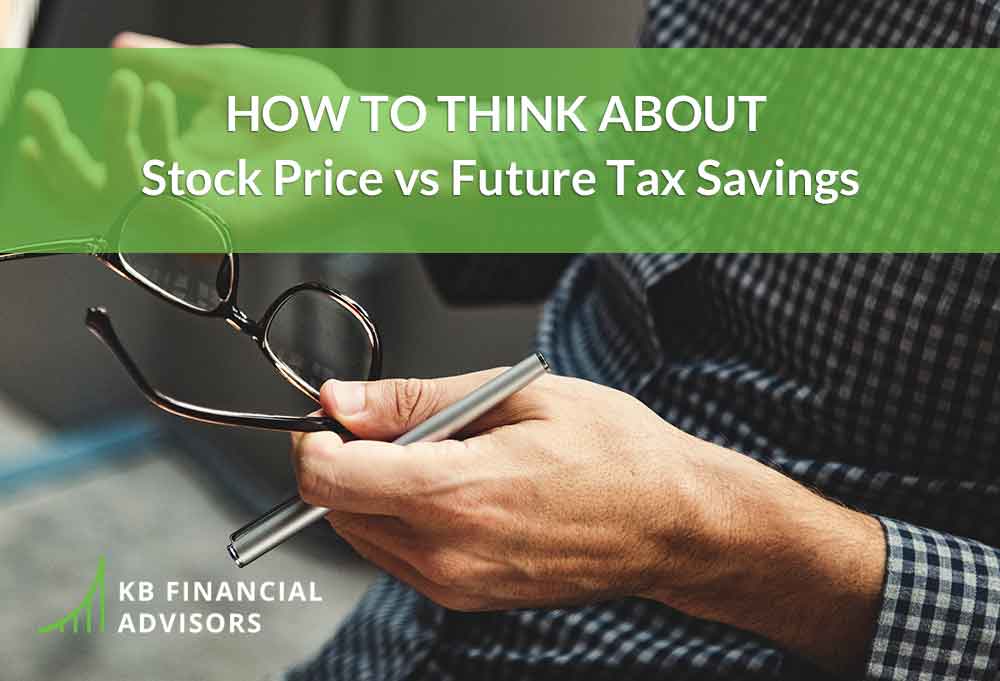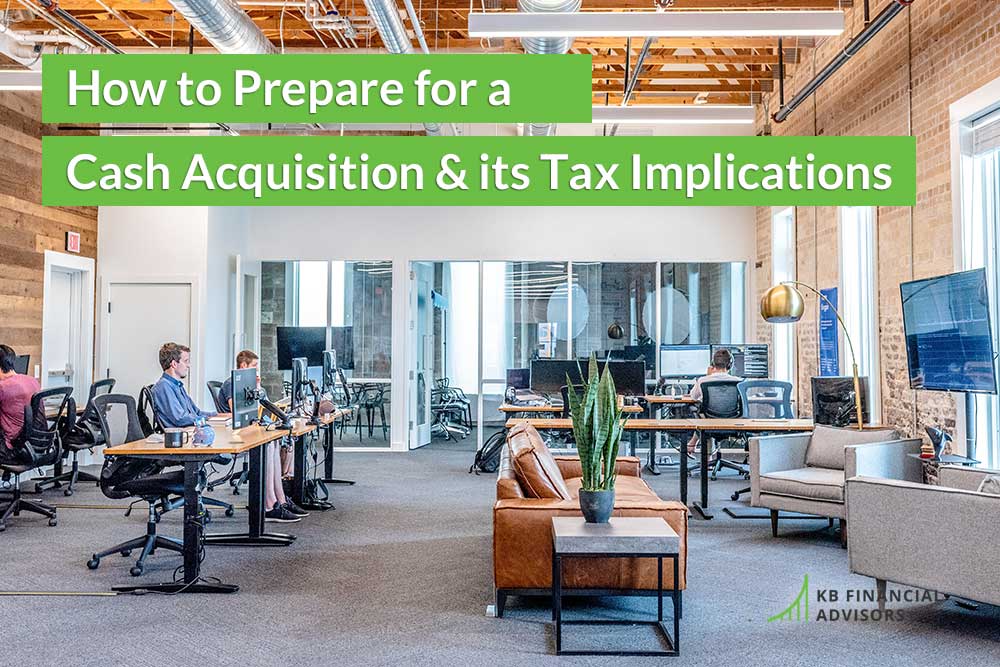“I know that if I hold for one year I get to pay a lower tax.”
I can’t tell you how many times I’ve heard that as a financial planner working with tech professionals.
When it comes to stock options or RSUs, people often get stuck focusing on taxes. It’s true that holding shares for a year could result in lower taxes owed in the future. However, whether or not that’s the truth isn’t the question that investors should be asking. Instead, they should be asking – Should I continue holding this share? What would make it worth selling now at a higher tax rate rather than holding for a lower tax rate?
Holding for One Year to Pay a Lower Tax
The specific tax that people are worried about when it comes to holding or selling is the difference between short-term capital gains and long-term capital gains. Let’s dive into what, exactly, capital gains taxes entail – and what you need to know about them.
Shares from the vest of RSUs, or the exercise of stock options, will be taxed as a capital gain or loss when you sell. The capital gains you earn on your investments are taxed as income – but what tax rate they’re subject to differs depending on whether you experience a capital gain or loss, and based on how long you hold your shares.
If you recognize a gain on shares held for a year or less, your earnings are taxed as a short-term capital gain. Short-term capital gains are taxed at your ordinary income tax rate – or the rate you pay on your salary. For some high-earning tech professionals, this can be as high as 37% – yikes.
If you hold your shares for more than a year, your earnings are taxed as a long-term capital gain, which is a lower rate. This rate can be as high as 23.8% – a significant savings of 13.2% when compared to the top short-term rate of 37%.
However, regardless of how high your long-term capital gain taxes are, they’re going to be lower than your ordinary income rate.
Let’s assume for a second that you have $1 million in capital gains this year. 13.2% of $1 million is a huge tax savings. When we run the numbers, this is what it looks like:
$1 million in stock option income X 37% (your income tax rate) = $370,000
$1 million in stock option income X 23.8% (your long-term capital gains rate) = $238,000
You’re effectively saving yourself $132,000. Invested and compounded over your lifetime, that figure could potentially grow into millions. Given these numbers, the choice between selling and holding seems like an easy one to make. However, there are other factors to consider that many people ignore when trying to decide what to do with their stock options.
Comparing Current Stock Price to Future Tax Savings
It’s never easy to make financial decisions that balance your present with preparing and planning for the future. The same is true for selling your stock options. This is truly a bird in the hand versus two in the bush kind of a thing. The current price is what you can get right now – it’s the bird in the hand.
The future tax savings is what you might get if the stock price holds. The assumption you make when you say, “I know that if I wait a year I’ll pay a lower tax on my gains,” isn’t exact. You’re assuming that you can sell a year from now and make the same amount of money as you could if you sold today. Maybe this is true, but there’s also a chance that the stock price could go down.
Calculating Your Break Even Price
Your break-even price is the lower stock price at which you lose the tax advantage of waiting, and the point at which you should have sold at the higher tax rate. Let’s look at an example with real numbers to get a better sense for how this works:
Your current stock price is $110. You paid $10 when you exercised your options. Your taxable gain is $100.
$110 (current price) – $10 (exercise price) = $100 gain
If you sold now, we’ll assume your tax rate is 37%. You’d pay $37 in taxes per share that you sell. If you wait a year to sell, assuming that you’ll pay 23.8% in long-term capital gains taxes, you’d pay $23.80 per share you sell in taxes.
Using these numbers, you can figure out how low the price of your shares can fall before you lose the benefit of tax savings.
Your current net profit if you sell now is $63 ($100 – $37). Your net profit if you wait a year to sell at $110 is $76.20. The key is to determine the lower price, taxed at the lower rate, at which your net profit is $63. That final number is your break-even price, or the price at which you’re no longer reaping a reward for waiting a year to sell your options.
No longer reaping a reward because you could sell now without waiting and still get $63.
To calculate that price, go through the following process:
$63 (your net profit if you sell now) / .762 (the amount of each dollar you keep after tax if you’re taxed at the 23.8% long-term capital gains rate) = $82.68
To calculate your share price, add your basis to your original break-even number. In this case, we’d add $10 + $82.68 = $92.68.
Using the numbers in this example, if you believe your stock price will fall below $93 (or your calculated break-even price) at some point in the next year, selling now may be in your best interest. Waiting any longer won’t necessarily win you any tax rewards, and selling at a higher price (even with the higher tax rate) will make you more money.
Other Considerations
This equation may seem relatively straightforward, but there are several other factors to take into consideration when deciding whether to sell or hold your shares.
Trading Windows
As an employee, you may not be able to sell whenever you want to. Some employers put trading windows in place – and if your stock price falls outside a trading window, or falls quickly after earnings, you may see the price fall below your break-even. The intention of trading windows is good – they allow insiders to trade without violating insider trading laws. However, when trying to decide whether to sell or hold your options, they can make your decision more complicated.
Time Left to One Year
If you just exercised, you’re looking at 12 months until you can get the lower tax rate. That’s 365 opportunities for your stock price to fall. On the other side of the coin, if your year-long wait period is almost up, it may be worth the wait.
Your Goals and Timeline
At the end of the day, your stock options and shares are intended to help you live your best financial life. If waiting for a year to sell isn’t going to serve your goals, it may not be worth it – even if you do save a bit of money on taxes. Do you need the cash to fund a goal now, like purchasing a home? Then go ahead and sell.
Make an Informed Decision – But Stay True To Your Goals
In my experience, people will try to simplify complex stock options by focusing on what they can calculate – taxes. However, taxes are only one small part of your stock option decisions. They may not even be the most important part.
Your financial plan should always be serving you and your goals on your timeline. Do your best to make an informed decision when it comes to your money. In this case, that means calculating your break-even price and weighing the pros and cons of selling versus holding with that information in mind.
Have questions? Want to know more? Contact us today.






